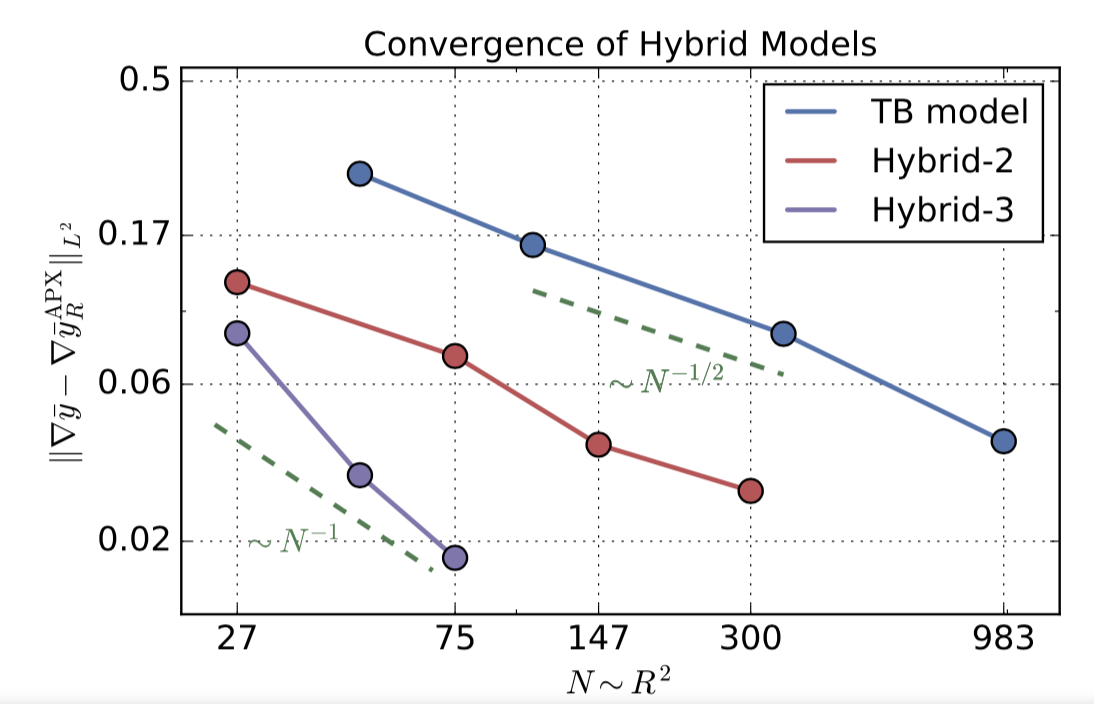Understanding locality of interaction, or other forms of sparsity, in ab initio models can be effectively exploited to construct highly efficient and accurate multi-scale schemes e.g. of QM/MM type. In QM/MM schemes we model regions of interest, such as a dislocation core in the following figure, using an electronic structure model, while the material bulk is modelled with a computationally inexpensive interatomic potential model.

Upon increasing the QM core region, the accuracy of the simulation should, in principle, increase, such as the following figure:

However, various artefacts in commonly used QM/MM schemes prevent this. The main new idea that made this figure possible is that we construct interatomic potentials (or forces) that are tuned to interact well with the QM model rather than using "off-the-shelf potentials". This yields new QM/MM schemes with rigorous convergence rates in terms of the QM region size. [56], [57], [58]